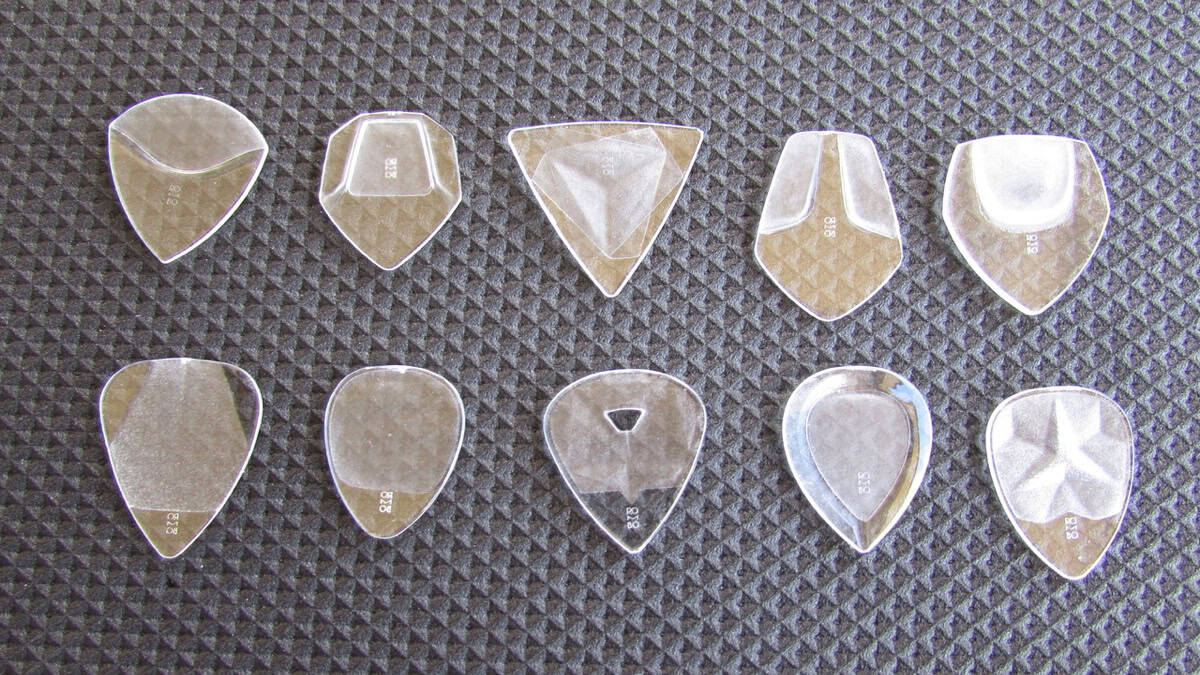Latest
Walking the Bass Line: How Original Does a Riff Need to Be in the Post – “Blurred Lines” World

A bass line was on trial in the recent “Blurred Lines” case that ended on March 10 with a jury verdict for the heirs of Marvin Gaye to the tune of $7.4 million on a claim that Robin Thicke and Pharrell Williams infringed on the copyright of Gaye’s 70’s hit “Got to Give It Up”.
While the verdict is in, many in the music and legal communities are outraged by what they perceive as a tone-deaf outcome that could stifle creativity. Jack Ashford, who recorded the original bass line on “Got to Give It Up” and bassist Verdine White of Earth Wind & Fire are among those who have denied that “Blurred Lines” ripped off “Got to Give it Up”, because the melodic and rhythmic elements are just not that similar.
Some expect the jury’s verdict will be tossed out by the trial judge, Hon. John A. Kronstadt, highly regarded as a copyright jurist, who could soon rule there was no copyright infringement as a matter of law. In any event, an appeal is likely, which could drag on for years.
Meanwhile, should a bass player on a recording session worry that a funky riff that comes into his head and rolls off his fingers might be too close to something someone laid down on tape decades earlier? Copyright law is not supposed to stifle creativity, and freedom of speech laws like the First Amendment in the U.S. and similar laws in other countries act as a counter-balance to copyright laws to ensure freedom of expression.
But some music copyright cases, like “Blurred Lines” and others, can be most peculiar. In 1991, a lawsuit claimed ZZ Top stole John Lee Hooker’s 1949 guitar riff from “Boogie Chillen’” for their 1973 hit “La Grange”. ZZ Top argued that the upbeat chord pattern was not his property but traced back to the Delta blues idiom and was free for anyone to use. ZZ Top prevailed in the case and, ironically, a music publisher who later purchased the La Grange copyright from the Texas trio went on to sue others for ripping off the riff from them. Perhaps more ironically, the attorney for the publisher who bought La Grange — the same publisher who was suing songwriters for stealing the boogie riff from ZZ Top, even after John Lee Hooker unsuccessfully claimed ZZ Top stole it from him — is now defending Robin Thicke and Pharrell Williams in the “Blurred Lines” copyright case. That attorney, Howard King, is one of the foremost music copyright litigators in the country.
So back to the bass line in “Blurred Lines”, a common, laid back groove that walks with the same slightly funky gait as so many others in its R&B-flavored ‘hood. One day it’s walking the line without a care, the next it’s hauled into court on charges of robbing the Marvin Gaye copyright bank.
During the trial, the Gaye family’s musicologist, Judith Finnell, testified against the “Blurred” bass line, presenting the copyright law equivalent of a police line-up where the “Blurred” and “Give” bass lines stood side by side. The similar hi-hat and cowbells rhythm from the original recording of “Got to Give It Up” was indadmissible at trial, as the case was only about infringement of the composition and as the sheet music deposited with the Copyright Office in the 1970s did not contain any percussion. With percussion out of the picture, Finell’s analysis heavily focused on the bass lines.
Finell — who testified she was paid $100,000 to render her opinion on behalf of the Gaye heirs — claims the first four bars of each song is enough to put the “Blurred” bass line behind bars.

Whether you read or listen to the music, two things seem clear: they aren’t very close and neither is very distinctive. Finnell and another musicologist on the Gayes’ team argued that the rests between notes were one of the most substantially similar things about these songs. In other words, they both have silences in similar places. Of course the Gaye heirs don’t claim they own silence, or should be paid every time a bass player lays out, but their argument that silent spaces between notes are a key similarity between these songs strikes some as peculiar.
Finnell also testified the bass lines were similar because they each emphasized the root of the chord on a downbeat, or anticipating the downbeat. Pharrell and Thicke’s team presented another musical police line-up, this time adding a third bass line, from “Superfly”, the 1972 hit from Curtis Mayfield, pre-dating “Got to Give it Up” by five years, noting that all of the bass lines play the root of the tonic chord on the downbeat or anticipating the downbeat.

These commonplace ideas are not protectable by copyright law, King argued, and even if they were, “Superfly” pre-dates “Give”. King also argued that there were “no two consecutive notes in any of the melodic examples in the Finell Report that have the same pitch, duration, and placement in the measure” in “Blurred” and “Give”.
But these musical arguments seemed to go in juror number one’s ear and out juror number eight’s. The jury was persuaded by the Gayes’ well-regarded attorney, Richard Busch, who effectively made the case more about whether Thicke and Pharrell were liars than whether the songs were too close. King argued that his clients’ credibility was irrelevant, that being “influenced” by earlier music is only lawful but the way most music is created, and that the songs should speak for themselves. But the jury didn’t get any of that.
As of now, the “Blurred” bass line is out on bail, praying that Judge Kronstadt will let it off the hook. If it takes the rap as a copyright infringement, countless other funky and syncopated bass lines may be packing their bags and fleeing the country before the Gayes or other R&B singers or their heirs come gunning for them too.
Already, the Gaye heirs are reportedly eyeing another lawsuit, saying that Pharrell has got to give it up again because his mega-hit “Happy” is too close to Gaye’s lesser-known “Ain’t That Peculiar”.
Peculiar indeed.
Gear News
New Gear: Alberto Rigoni Signature Bass, the VPR5 by Gaetano Costanzo!

Alberto Rigoni Signature Bass, the VPR5 by Gaetano Costanzo!
Internationally renowned bassist ALBERTO RIGONI (soloist, BAD AS, Vivaldi Metal Project, TwinSpirits, etc.) is proud to announce the release of his signature bass VPR5 made by renowned Italian luthier Gaetano Costanzo!
The bass is entirely handmade in Italy, without the use of CNC or other machinery, and has rather special features. The VPR is a 5-string bass (but also available as a 4-string) with 30 frets, Seymour Duncan pickups, Music Man Alnico style, passive electronics (volume, tone and a switch to select series/parallel/single-coil mode), alder body, and American maple neck and fingerboard. Gotoh tuners that ensure perfect intonation. The bass is totally painted white (nitro finish) but other colors can be requested. The VPR has a weight of about 2.9 kg and suitable for any genre.
For more information contact Gaetanobass77@gmail.com or visit online at www.instagram.com/gaetanocostanzoluthier or www.facebook.com/GaetanoCostanzoLuthier
Bass Videos
Interview With Bassist Graham Stanush

Bassist Graham Stanush…
Return to Dust is keeping Grunge alive and well! They have a new self-titled album that went out on May 3rd, 2024 and will be super busy promoting this project in the near future.
Graham Stanush is the bass powerhouse driving their sound and adding vocals to the mix. Join me as we hear all about Graham’s musical journey, details about the new album, how he gets his sound and their plans for the future.
Featured Videos:
Visit Online:
linktr.ee/returntodust
instagram.com/returntodustband/
twitter.com/Returntodustbnd
youtube.com/@returntodustband
tiktok.com/@returntodustband
Bass Videos
Review: CrystalBright Rombo Picks

CrystalBright Rombo Picks
PR SamplePlaying bass with a pick is still a touchy subject in our community. I believe you should be able to use whatever you need to get your sound. Even though I mostly play with my fingers, I like to check out innovative new picks that might have something new to offer, sonically speaking.
Judith and Carlos from Rombo recently contacted me about a new material called CrystalBright that they have been researching for the last 12 months and offered to send some prototype picks. After trying them out, I put together this video with my findings.
For more info check out @rombopicks
Latest
This Week’s Top 10 Basses on Instagram

Check out our top 10 favorite basses on Instagram this week…
Click to follow Bass Musician on Instagram @bassmusicianmag
FEATURED @sireusaofficial @ricardosguitars @gullone.bajos @godin_guitars @sandbergguitars @adamovicbasses @bassbros.uk @baumguitars @harleybentonofficial @dingwallguitars
Gear
New Joe Dart Bass From Sterling By Music Man

Sterling by Music Man introduces the Joe Dart Artist Series Bass (“Joe Dart”), named after and designed in collaboration with the celebrated Vulfpeck bassist.
Above photo credit: JORDAN THIBEAUX
This highly-anticipated model marks the debut of the Dart bass in the Sterling by Music Man lineup, paying homage to the Ernie Ball Music Man original that all funk players know and love. The bass embodies many of the original model’s distinctive features, from its iconic minimalist design to the passive electronics.

The design process prioritized reliability, playability, and accessibility at the forefront. Constructed from the timeless Sterling body, the Dart features a slightly smaller neck profile, offering a clean tone within a comfortable package. The body is crafted from soft maple wood for clarity and warmth while the natural finish emphasizes the simple yet unique look.
Engineered for straightforward performance, this passive bass features a ceramic humbucking bridge pickup and a single ‘toaster’ knob for volume control. Reliable with a classic tone, it’s perfect for playing in the pocket. The Dart is strung with the all-new Ernie Ball Stainless Steel Flatwound Electric Bass Strings for the smoothest feel and a mellow sound.

The Sterling by Music Man Joe Dart Bass is a special “Timed Edition” release, exclusively available for order on the Sterling by Music Man website for just one month. Each bass is made to order, with the window closing on May 31st and shipping starting in November. A dedicated countdown timer will indicate the remaining time for purchase on the product page. Additionally, the back of the headstock will be marked with a “2024 Crop” stamp to commemorate the harvest year for this special, one-of-a-kind release.
The Joe Dart Bass is priced at $399.99 (MAP) and can be ordered globally at https://sterlingbymusicman.com/products/joe-dart.
To learn more about Joe Dart, visit the official Vulfpeck artist site here https://www.vulfpeck.com/.
















